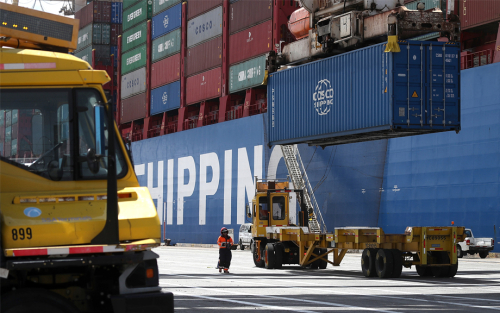Has the Pandemic Reduced U.S. Remittances Going to Latin America?

Workers’ remittances—funds that migrants send to their country of birth—are an important source of income for a number of economies in Latin America, with the bulk of these funds coming from the United States. Have these flows dried up, given the COVID-19 recession and resulting unprecedented job losses? We find that remittances initially faltered but rebounded in the summer months, performing better than during the last U.S. recession despite more severe job losses. Large government income support payments probably explain some of this resilience. Whether remittances continue to hold up is likely to depend on how quickly the U.S. job market recovers, particularly in hard-hit service industries.
W(h)ither U.S. Crude Oil Production?
Who Pays the Tax on Imports from China?

Tariffs , of little interest for decades, are again becoming relevant given the increase in the levies charged on Chinese imports. U.S. businesses and consumers are shielded from higher tariffs to the extent that Chinese firms lower their dollar-denominated prices. However, data indicate that prices on goods from China are not falling. As a result, U.S. firms and consumers are paying the tax.
The End of China’s Export Juggernaut

China has been an exporting juggernaut for decades. In the United States, this has meant a dramatic increase in China’s share of imports and a ballooning bilateral trade deficit. Gaining sales in the United States at the expense of other countries, Chinese goods rose from only 2 percent of U.S. non-oil imports in 1990 to 8 percent in 2000 and 17 percent in 2010. But these steady gains in U.S. import share have stopped in recent years, with China even losing ground to other countries in some categories of goods. One explanation for this shift is that Chinese firms now have to directly compete against manufacturers in high-skill developed countries while also fending off competition from lower-wage countries, such as Vietnam. This inability to make additional gains at the expense of other countries means that exports don’t contribute as much to China’s overall growth as they used to.
Would a Stronger Renminbi Narrow the U.S.‑China Trade Imbalance?
The United States buys much more from China than it sells to China—an imbalance that accounts for almost half of our overall merchandise trade deficit. China’s policy of keeping its exchange rate low is often cited as a key driver of that country’s large overall trade surplus and of its bilateral surplus with the United States. The argument is that a stronger renminbi (the official currency of China) would help reduce that country’s trade imbalance with the United States by lowering the prices of U.S. goods relative to those made in China. In this post, we examine the thinking behind this view. We find that a stronger renminbi would have a relatively small near-term impact on the U.S. bilateral trade deficit with China and an even more modest impact on the overall U.S. deficit.











 RSS Feed
RSS Feed Follow Liberty Street Economics
Follow Liberty Street Economics